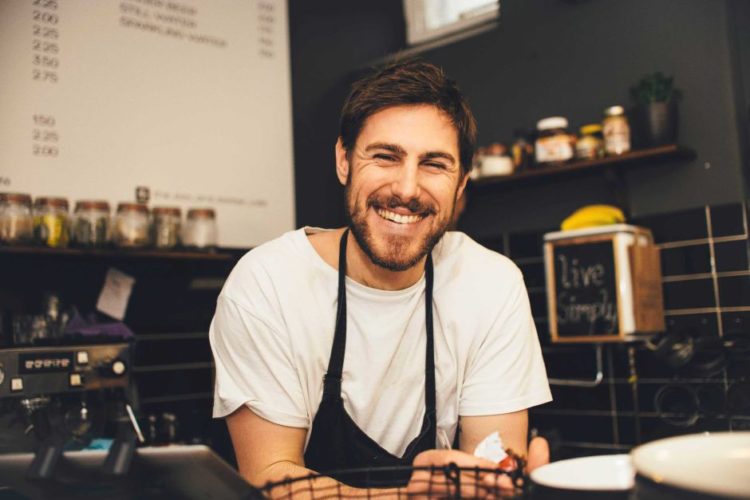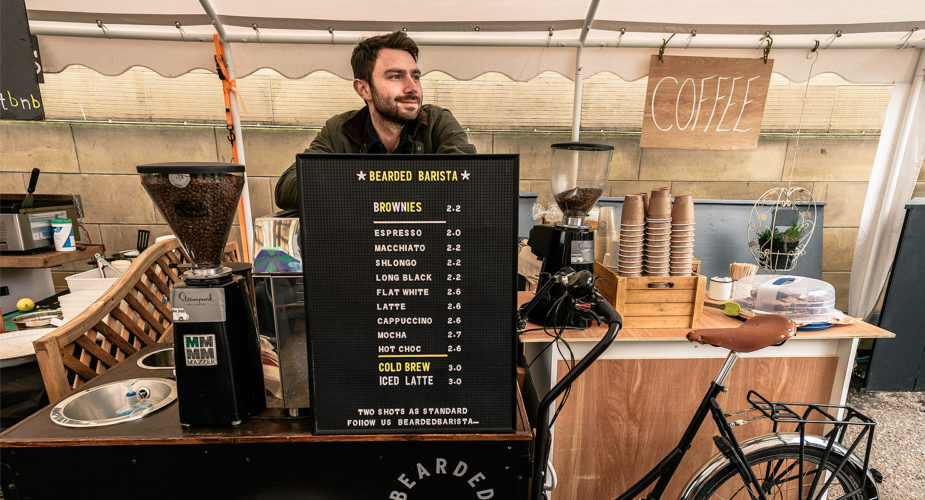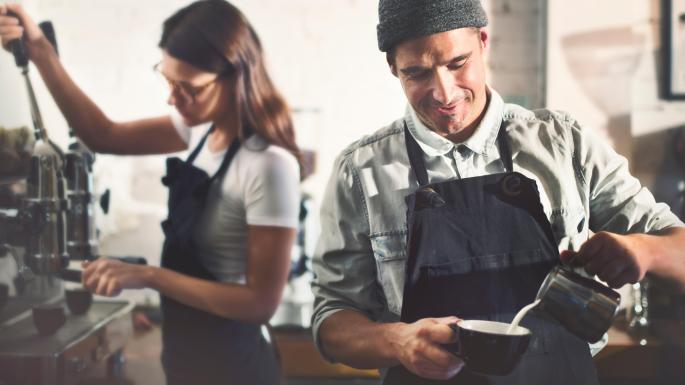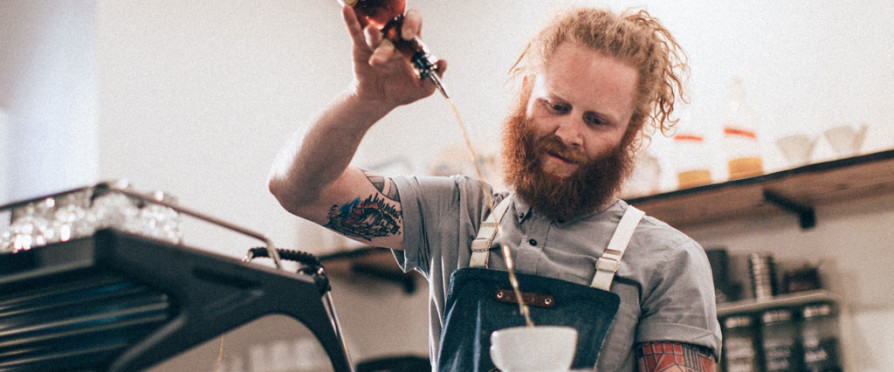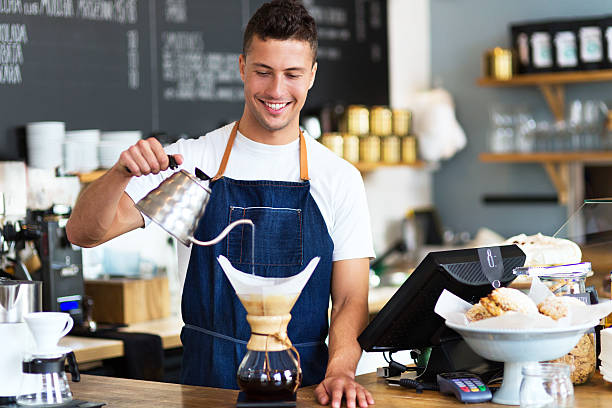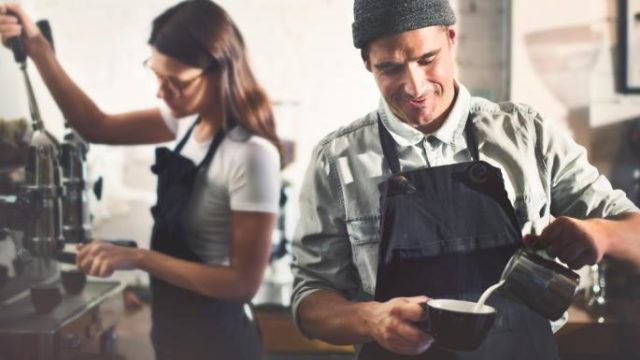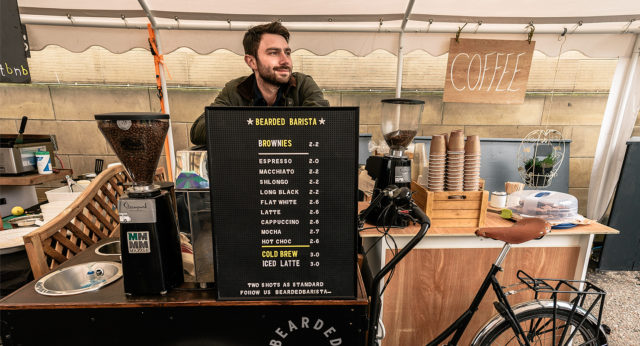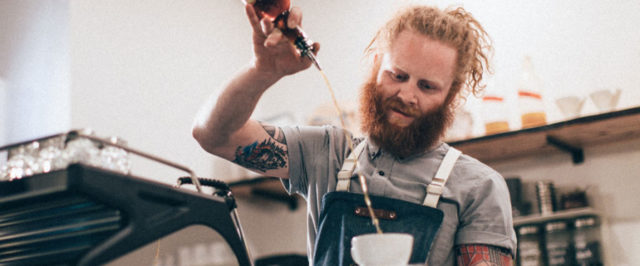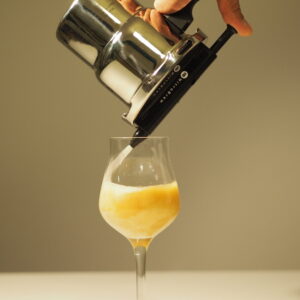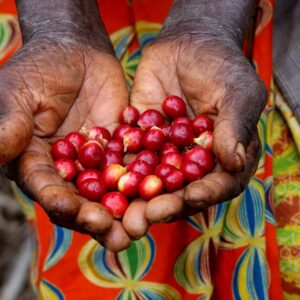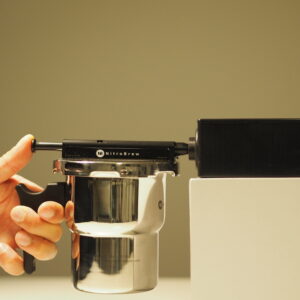What barista can learn from bartenders?
Timon Kaufmann•Beans n Booze
When I started to get excited about the bar around ten years ago, long before I could call myself a barista too, the German bar community as we know it today was still in its infancy. Freshly squeezed juices were slowly but surely catching up outside the high-end drinking temples. Ingredients such as a fresh sprig of rosemary in the drink caused ectasis in guests as well as in bartenders. People began thinking about things like “cocktail DNA”, “craft cocktails” and “cuisine style” and start caring about the origins of the craft. Thanks to the Internet, it was possible to network quickly and exchange information. Small and larger networks started to form and bartender also slowly began to extend its feelers to international climes. It was the righttime for the first European bar conventions and the “scene” slipped closer together.
A period in which both guests and bartenders rediscovered the world of cocktails and quality of drinks and spirits developed rapidly.
More and more bartenders immersed themselves deeper and deeper in their craft, rolling books from the mid-19th century, always in search of the most authentic cocktail. The newly gained, or better, recovered knowledge was supplemented with the means and possibilities of contemporary technology. They tested and investigated when a citrus juice reaches its optimum, what temperature the perfect ice must have and what influence different techniques of shaking have on the finished cocktail. This promoted the understanding of the matter and raised the quality to a hitherto unknown level.
But there were also less enjoyable developments that cast their shadow to the present day.
It was observed that more and more bartenders and hosts were lost in their products. The focus shifted from the guest to the cocktail. The supposed quality and authenticity of the drink became more important than the preferences of those who paid for it. They lived in their own world, confirmed by all those who moved in social media in the same bubble and lost sight of the essential. The guest became in some places the necessary evil of the profession. Anyone who praised the bartender and his creations, who clung to his lips while giving a monologue about the beginnings of the cocktail culture and his latest creation, was a welcome guest. Those who had their own opinion and did not want to get involved with cocktail creations infused with salmon, walnut or tobacco, were free to leave the bar and satisfy their unworthy palate elsewhere.
But also the guest changed. He became more demanding, discerning and critical. Gone are the days when a good barman could fill an evening with half-truths and revolver hero stories. Any given information could be checked and corrected within a swipe of your cell phone. The guest grew to “experts” almost overnight and, not infrequently, wanted to show off to the real experts. Woe to him who dared to shake the Caipirinha with ice cubes and white cane sugar, since anyone who has read the 1001 cocktail guide must know it’s made with crushed ice and brown sugar! Tinker!
Cocktail recipes were elevated from a transcript to an inviolable basic law. Partly, both sides rocked to a seemingly unbearable level of taking oneself too seriously.
On the sunny side, however, many recognized the value of a high-quality spirit and the price you have to pay for it. The Bartender’s stand slowly regained its reputation and acceptance. The questions of what to study and do in real life became more and more rare and you recognized the profession that was behind it. One began to trust the bartender to use his competence in the choice of the drink and to sink into his fancy creations more often. In some places, the bar became a culinary experience and the guest was happy to agree.
Recalling this development and visiting the coffee hotspots of today, it is almost inevitable that a déjà-vu approach should occur.
Coffee, too, had its difficulties in the troubled Europe of the young 20th century. Also, the coffee, or at least its actual qualities has been rediscovered recently. The coffee also has many young, motivated and ambitious disciples, barista, who want to announce his joyful, caffeinated message. And also the coffee struggles with the same side effects, who attended the development of the cocktail culture.
Currently the coffee scene is in its storm and urge phase. Barista would like to show the whole world how delicious and versatile a freshly brewed cup of coffee can be. Because it is. To clarify.
Barista try to understand every detail about the little bean, control and compose the individual components of the water to match the coffee and feed cows with selected herbs to get the perfect milk for the perfect cappuccino.
However, it is often forgotten who actually finances this passion. Just as it was a few years ago in the bars of the country.
This process is easy to understand. Initially, there are very few who offer a quality that exceeds that of the standard by far. Everything is new, exciting and different. People come to learn something new. Price and service are rather subordinate. One wants to have a say and takes a lot for purchase. Even if it means renouncing your own preferences. The store is full, and only because you have the supposedly best coffee, everything else seems negligible. Easy to feel superior to the competition and the individual guest who dares to voice criticism.
Over time, however, more and more competition is pushing into the market. And suddenly you are not that special anymore. 50 cents less, a spoonful of sugar and friendly service make a big difference.
Bartenders now understand that the desire for a Pina Colada does not make you a bad person. But just a guest who likes to drink creamy cocktails. And if there’s no cream, you’re trying to find an alternative, rather than simply doing what you think is best. Unfortunately, this process is still missing in many good cafes.
Sugar and milk have not become an integral part of our coffee culture in recent years. No more than heavily roasted Italian coffee. A majority of people know and like it like that.
Lightly roasted coffee with fruity-sour notes, however, is new to many. Just as it was then high-percentage cocktails such as the Old Fashioned or Sazerac. It is not a very successful strategy to tell the guests that the way they have drunk their coffee throughout their lives is inedible and thus lacking in judgment.
It can be that easy. A drinking recommendation is often enough to avoid the usual spoon of sugar. If it still tastes better with sugar, that’s okay too.
I had many guests with their first lightly roasted coffee have made a face and now do not want to drink anything else. Because they were slowly introduced to the product. First with milk. Then with less milk. At some point without milk. And finally a filter coffee. It takes patience. But if you apply them, the guests will appreciate it too.
It is fascinating how detailed and meticulous the coffee world handles and works with its products. The optimum of the coffee seems to exist only in its purest form. Water and coffee. Everything else seems to be just a disruptive factor. A setting very reminiscent of that of a die-hard single malt drinker. The highest of the feelings are a few drops of water, preferably from the same spring water from which the whiskey was made. A wonderful way to enjoy a whiskey. But by far not the only one.
The use of coffee in other forms is rather rare outside of competitions. Even though it’s growing. A look beyond the classical coffee-making process, a healthy degree of experimentation and a more relaxed attitude toward matter would do justice to the diversity of the coffee. The coffee scene is certainly not lacking in creativity, but it does not dare to fully exploit it.
There are many things the coffee scene can learn from the mistakes of the bar scene. Conversely, the topic of coffee has still not arrived in many bars.
So it’s only a matter of time before both worlds come closer together and learn and benefit from each other. Bars and cafes of the world will thank you.
In Italy, the word barista is synonymous with bartender. Maybe the Italians just always knew what belonged together.



